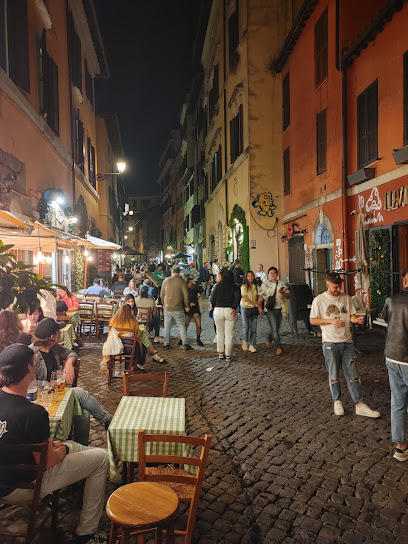
The Historic Jewish Ghetto of Rome: A Living Testament to Resilience
Explore the Ghetto Ebraico di Roma, a historic district rich in Jewish culture, cuisine, and resilience, telling a unique story of Rome's diverse heritage.
Discover the rich history and vibrant culture of the Ghetto Ebraico di Roma, a captivating district that tells the story of the Jewish community in Rome through its historic streets, synagogues, and delectable cuisine. Immerse yourself in this unique area, where every corner reveals a piece of history and every meal is a celebration of heritage.
A brief summary to Ghetto Ebraico di Roma
- Via del Portico d'Ottavia, 29, Rome, Metropolitan City of Rome Capital, 00186, IT
Local tips
- Visit during the week for a quieter experience; weekends can be bustling with tourists.
- Try the local eateries for authentic Jewish-Roman cuisine, especially the fried artichokes.
- Consider taking a guided tour to gain deeper insights into the area's history and significance.
- Respect the local customs, especially when visiting the Great Synagogue and other religious sites.
- Take time to explore the nearby areas, including the Tiber River, for beautiful views and a complete experience.
Getting There
-
Walking
If you are starting from the Colosseum, exit the Colosseum and walk towards Via di San Giovanni in Laterano. Head north until you reach Piazza Venezia. From there, continue straight along Via del Corso until you reach Piazza del Popolo. At Piazza del Popolo, take the right exit towards Via della Ripetta. Continue straight until you reach the Tiber River. Cross the river using the Ponte Sant'Angelo bridge. After crossing, turn left and walk along Lungotevere Castello until you reach the next bridge, Ponte Vittorio Emanuele II. Cross this bridge and continue straight until you reach Via del Portico d'Ottavia, where Ghetto Ebraico di Roma is located.
-
Metro
If you are near the Termini station, take Line B (Blue Line) towards Laurentina. Get off at the second stop, Colosseo. Exit the station and walk towards Via di San Giovanni in Laterano, then follow the walking directions provided from the Colosseum. Alternatively, from Termini, you can take Line A (Red Line) towards Battistini and get off at the Ottaviano station. From there, walk towards the Tiber River and follow the directions along Lungotevere until you reach Ghetto Ebraico di Roma.
-
Bus
If you are near the Trevi Fountain, walk to the nearest bus stop at Piazza San Lorenzo in Lucina. Take bus number 81 or 87 towards Termini station. Get off at the stop ‘Largo Argentina’. From there, it's a short walk. Head towards Via del Portico d'Ottavia. Follow the signs to Ghetto Ebraico di Roma, which will be a short distance ahead on your left.
-
Tram
If you are at Piazza del Popolo, walk to the nearby tram stop 'Piazza del Popolo' and take tram line 2 towards 'Piazza di Porta Maggiore'. Get off at the 'Piazza di Porta Maggiore' stop. From there, you can walk towards Via del Portico d'Ottavia, which is about a 20-minute walk away. Follow the streets until you reach your destination.
Discover more about Ghetto Ebraico di Roma
Iconic landmarks you can’t miss
Rione XI Sant'Angelo
0.0 km
Discover Rione XI Sant'Angelo, a historic Roman neighborhood filled with charming streets, delicious food, and rich cultural experiences.
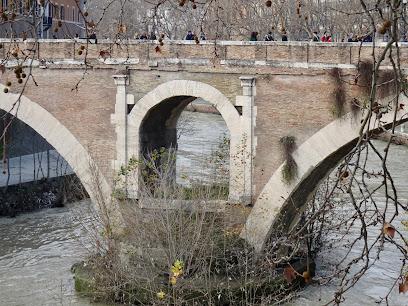
Via del Portico d'Ottavia
0.1 km
Discover the charm of Via del Portico d'Ottavia, a historic street in Rome's Jewish Ghetto, rich in culture, cuisine, and ancient history.
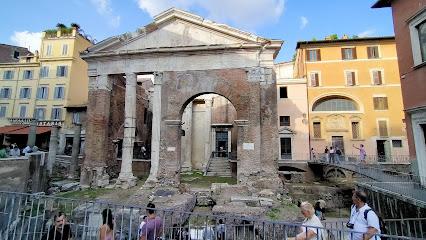
Lungotevere de' Cenci
0.2 km
Explore Lungotevere de' Cenci in Rome, where scenic beauty and rich history converge along the enchanting Tiber River.
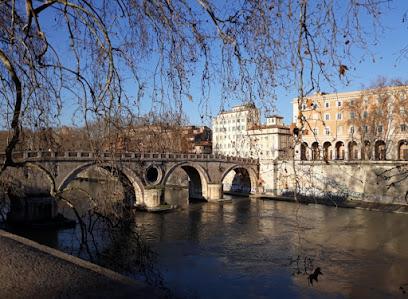
Piazza Mattei
0.2 km
Explore the enchanting Piazza Mattei, a serene square in Rome featuring the stunning Turtle Fountain and a vibrant atmosphere perfect for relaxation.
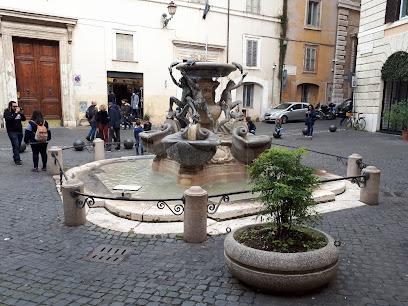
Palazzo Mattei
0.2 km
Explore the architectural beauty and historical significance of Palazzo Mattei, a must-visit monument in the heart of Rome, Italy.
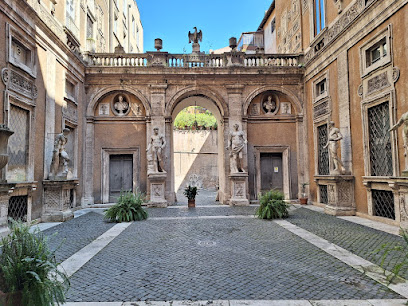
Piazza Costaguti
0.2 km
Explore the enchanting Piazza Costaguti in Rome's Jewish Quarter, a hidden gem with rich history, stunning architecture, and authentic local cuisine.
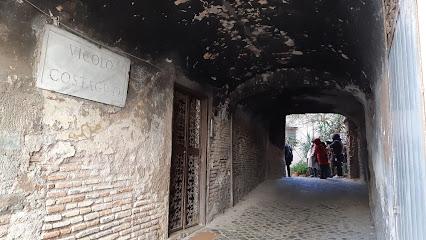
Piazza Margana
0.2 km
Explore the hidden beauty of Piazza Margana, a charming square in Rome that offers a taste of local culture and history amidst stunning architecture.
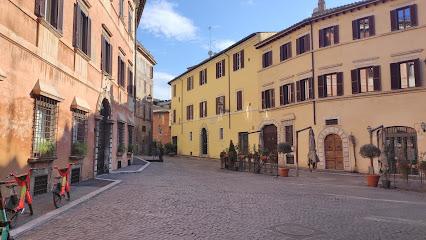
Piazza S. Bartolomeo All'Isola
0.2 km
Experience the serene beauty and rich history of Piazza S. Bartolomeo All'Isola, a picturesque square in the heart of Rome offering culinary delights and stunning architecture.
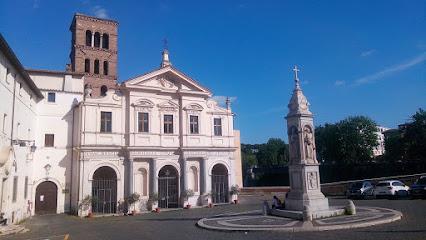
Torre Margana (o dei Margani)
0.3 km
Experience the rich history and stunning architecture of Torre Margana, a must-see cultural landmark in the heart of Rome, Italy.
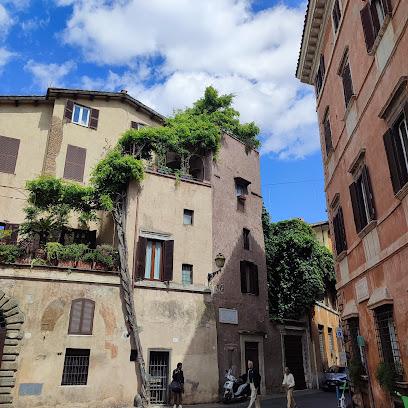
Piazza Cenci
0.3 km
Discover the captivating charm of Piazza Cenci, a hidden gem in Rome showcasing rich history, stunning architecture, and the essence of Italian culture.
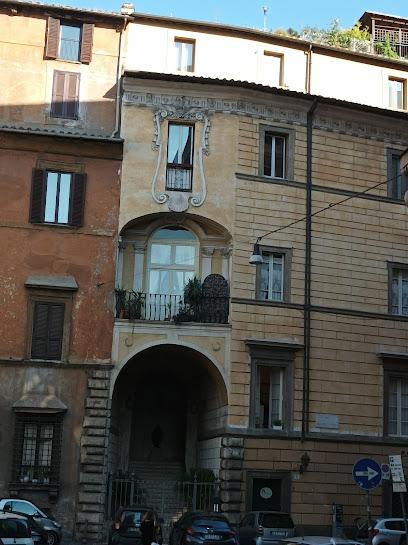
Ponte Cestio
0.3 km
Discover the historic Ponte Cestio, an ancient bridge in Rome connecting Tiber Island and Trastevere, offering stunning river views and a vibrant atmosphere.
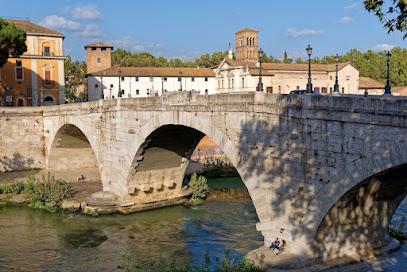
Via Luigi Petroselli
0.3 km
Experience the charm and history of Via Luigi Petroselli, a picturesque street in Rome with stunning views of the Tiber River.

Piazza d'Aracoeli, 16
0.3 km
Experience the enchanting atmosphere of Piazza d'Aracoeli, a historic square in Rome with stunning views and rich cultural heritage.
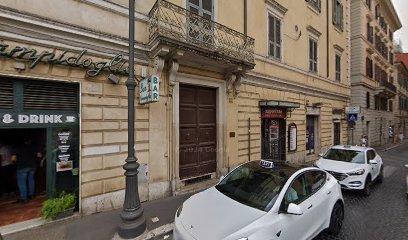
Unmissable attractions to see
Fondazione Museo della Shoah
0.0 km
Explore the Fondazione Museo della Shoah in Rome, a powerful museum dedicated to Holocaust remembrance, education, and the fight for human rights.
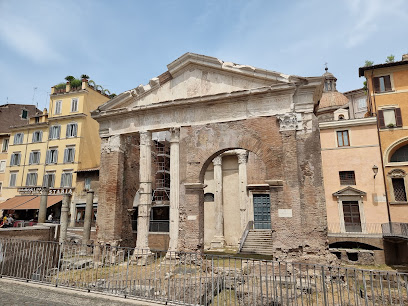
Portico of Octavia
0.0 km
Explore the Portico of Octavia, an ancient Roman monument nestled in the heart of Rome's Jewish Ghetto, showcasing timeless history and stunning architecture.
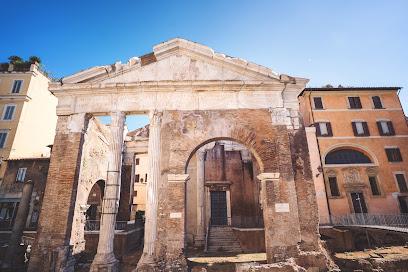
Chiesa di Sant'Angelo in Pescheria
0.0 km
Explore the serene beauty of Chiesa di Sant'Angelo in Pescheria, a hidden gem in Rome's historic center that enchants with its rich history and stunning architecture.
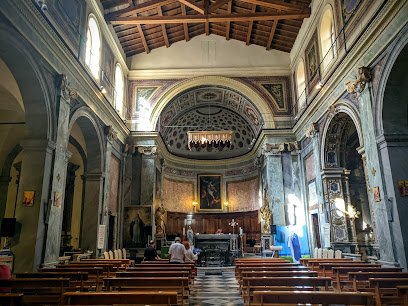
Jewish Museum
0.0 km
Explore the Jewish Museum of Rome for a deep dive into the history and culture of one of Europe's oldest Jewish communities.

Tempio Maggiore
0.1 km
Discover the beauty and history of Tempio Maggiore, Rome's Great Synagogue, a symbol of Jewish heritage along the Tiber River.
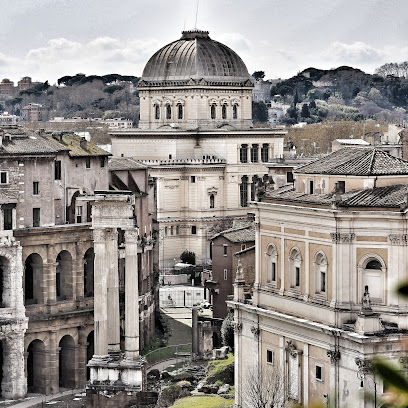
Pietra d'inciampo in memoria di Angelo Sed
0.1 km
Discover the poignant Pietra d'Inciampo in Rome, a powerful memorial dedicated to Holocaust remembrance and the legacy of Angelo Sed.
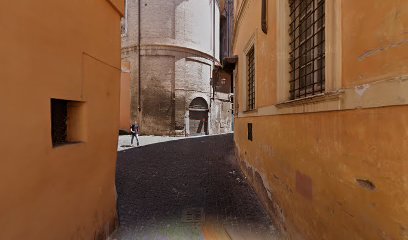
Il Giardino Romano
0.1 km
Discover the rich flavors of Rome at Il Giardino Romano, an Italian restaurant offering a delightful menu of traditional dishes in a charming setting.
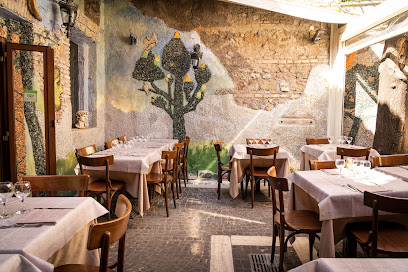
Temples of Apollo Sosiano & Bellona
0.1 km
Explore the enchanting Temples of Apollo Sosiano and Bellona, where ancient Roman history and architectural beauty converge in the heart of Rome.
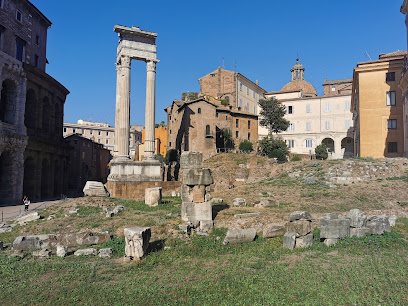
Pietra d'inciampo in memoria di Costanza Sonnino
0.1 km
Explore the Pietra d'inciampo in memory of Costanza Sonnino, a poignant Holocaust memorial in Rome's historic Jewish Quarter, reflecting on the past.
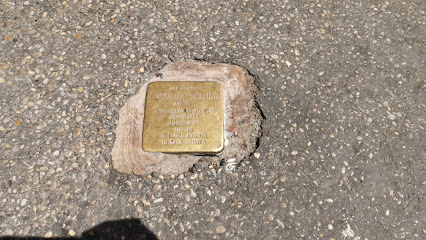
Chiesa San Gregorio della Divina Pietà
0.1 km
Discover tranquility and artistic splendor at Chiesa San Gregorio della Divina Pietà, a hidden gem in the heart of Rome's rich spiritual heritage.
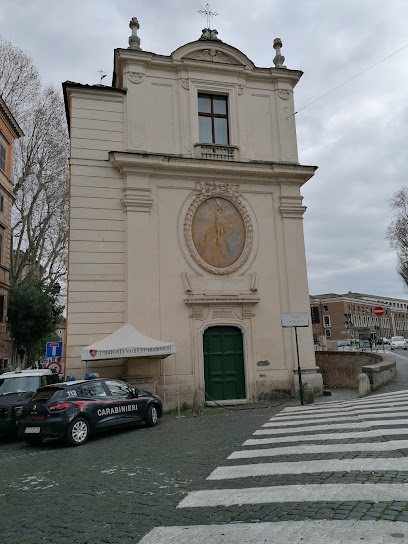
Pietre d'inciampo in memoria di Amedeo Sonnino, Dora Pavoncello, Giulio Amati
0.1 km
Explore the Pietre d'Inciampo in Rome - a poignant memorial honoring Holocaust victims and reminding us of history's lessons.
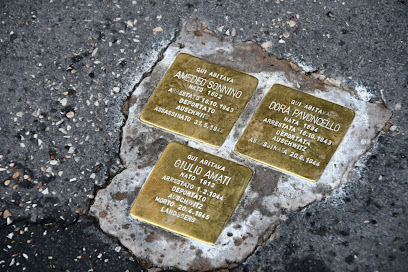
Chiesa di Santa Maria in Portico in Campitelli
0.1 km
Explore the serene beauty and artistic treasures of Chiesa di Santa Maria in Portico in Campitelli, a historic Catholic church in Rome.
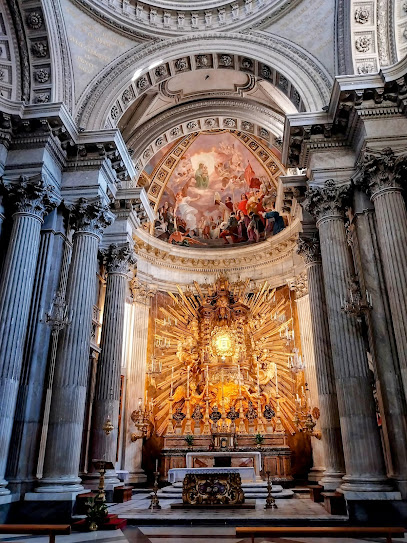
Marcellus Theater
0.1 km
Explore the Marcellus Theater, a stunning ancient site in Rome that showcases the grandeur of Roman architecture and rich cultural heritage.

Teatro di Marcello
0.1 km
Explore the enchanting Teatro di Marcello, an ancient Roman theater showcasing history, architecture, and vibrant culture in the heart of Rome.
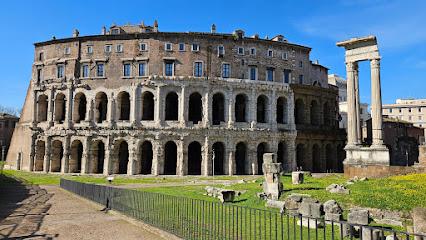
Santa Rita da Cascia in Campitelli
0.1 km
Discover the tranquil beauty of Santa Rita da Cascia in Campitelli, a cultural center steeped in history and spiritual significance in the heart of Rome.
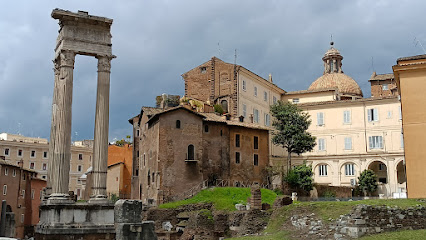
Essential places to dine
In Roma - since 1917
0.4 km
Discover authentic Italian flavors at In Roma - where tradition meets culinary excellence in the heart of Rome.
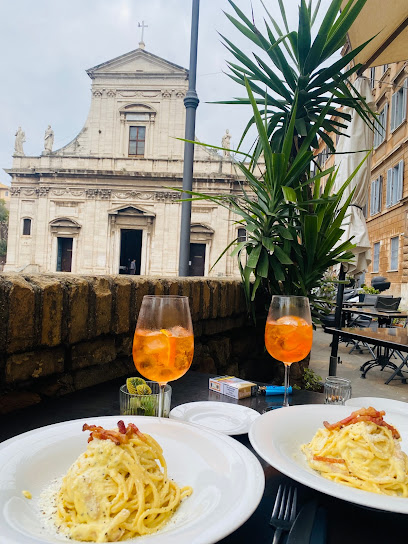
Roscioli Salumeria con Cucina
0.4 km
Discover authentic Italian flavors at Roscioli Salumeria con Cucina, where tradition meets modern culinary artistry in the heart of Rome.
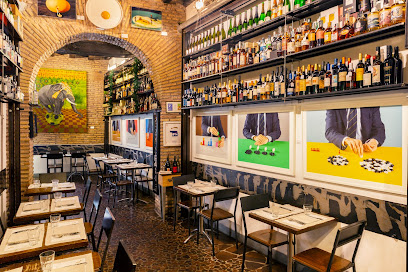
Ristorante Puntarella
0.4 km
Experience authentic Roman cuisine at Ristorante Puntarella – where tradition meets taste in the heart of Rome.
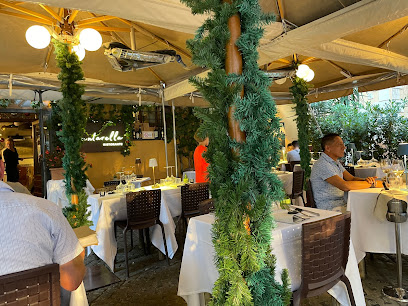
Unique Al Palatino Garden Restaurant
0.5 km
Experience authentic Italian cuisine amidst lush gardens at Unique Al Palatino Garden Restaurant in Rome.
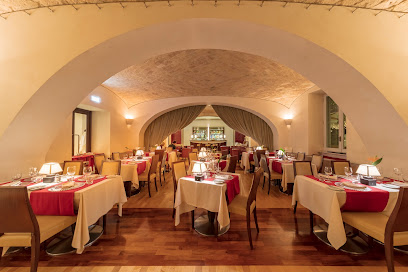
Da Nina a Trastevere
0.5 km
Discover authentic Sicilian cuisine at Da Nina a Trastevere—where every dish tells a story in the heart of Rome.
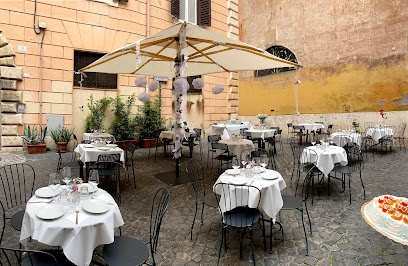
La Ciambella
0.5 km
Discover authentic Italian cuisine at La Ciambella in Rome - where every dish celebrates the rich flavors of Italy.
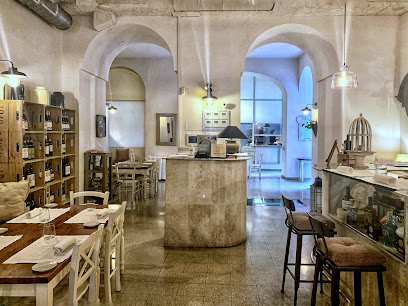
Roma Sparita
0.6 km
Experience authentic Roman cuisine at Roma Sparita in Trastevere—home to iconic dishes like Cacio e Pepe amidst charming surroundings.
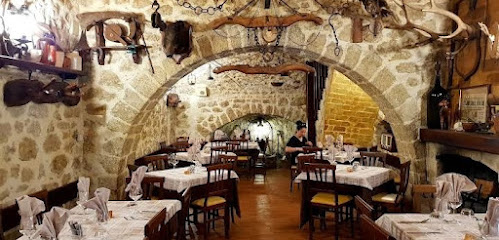
Mercato Hostaria Roma
0.6 km
Experience authentic Italian flavors at Mercato Hostaria Roma, where tradition meets modern culinary excellence in the heart of Rome.
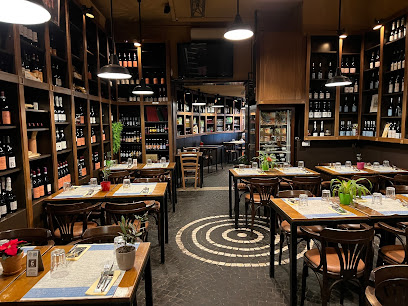
Ristorante Da Barbara
0.6 km
Experience authentic Italian flavors at Ristorante Da Barbara in Rome's enchanting Campo de' Fiori district.
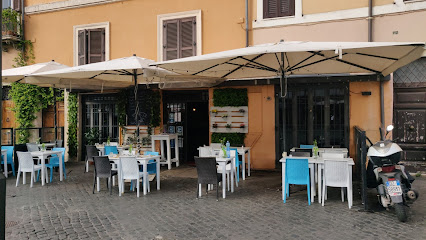
Ai Balestrari Campo de Fiori
0.6 km
Experience authentic Roman cuisine at Ai Balestrari Campo de Fiori – where every dish tells a story steeped in tradition.
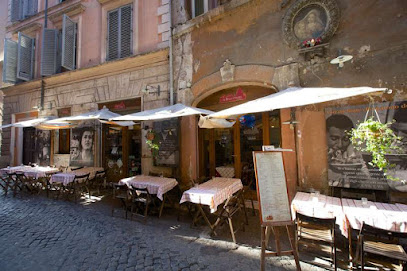
Hedera - Osteria Contemporanea
0.6 km
Experience modern Italian cuisine at Hedera - Osteria Contemporanea in Rome; a perfect blend of tradition and innovation awaits you.
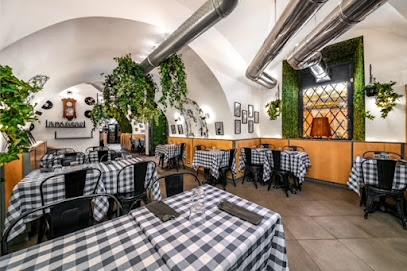
Ristorante il Buco Roma
0.6 km
Experience authentic Tuscan flavors at Ristorante il Buco in Rome—where tradition meets taste.

Ristorante Campo de’ Fiori
0.6 km
Experience authentic Italian cuisine at Ristorante Campo de’ Fiori in Rome – from exquisite seafood dishes to delightful pizzas.

Sloppy Sam's Roma
0.6 km
Experience authentic Roman cuisine at Sloppy Sam's Roma, located near Campo de' Fiori - where flavor meets tradition.
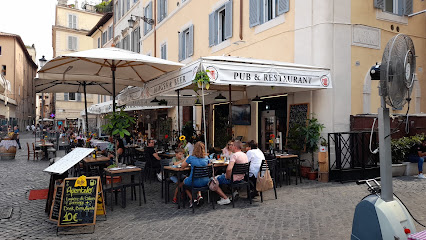
Antica Hostaria Romanesca
0.6 km
Experience authentic Italian flavors at Antica Hostaria Romanesca in Rome's historic Campo de' Fiori.
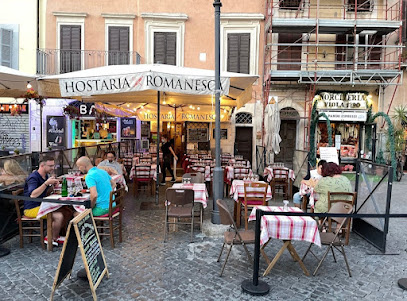
Markets, malls and hidden boutiques
Open Door Bookshop
0.4 km
Discover the charm of Rome through literature at Open Door Bookshop, a cozy haven for book lovers in the heart of Trastevere.
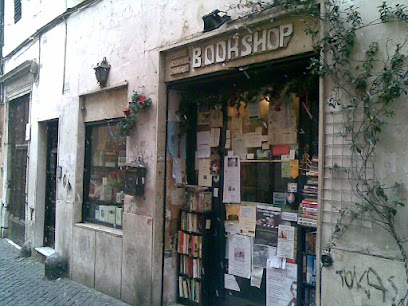
M Delavari Pelletteria Roma
0.4 km
Explore exquisite Italian leather craftsmanship at M Delavari Pelletteria in Rome, offering handcrafted bags, wallets, and accessories for discerning travelers.
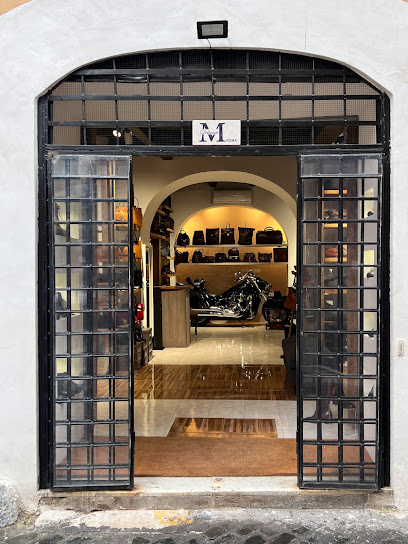
Amor Roma gift shop
0.5 km
Explore Amor Roma Gift Shop: Your go-to destination for unique souvenirs and gifts that embody the spirit of Rome.

Trastevere Store
0.5 km
Explore Trastevere Store, where Roman style meets contemporary fashion in the heart of Trastevere, Rome's most charming neighborhood.
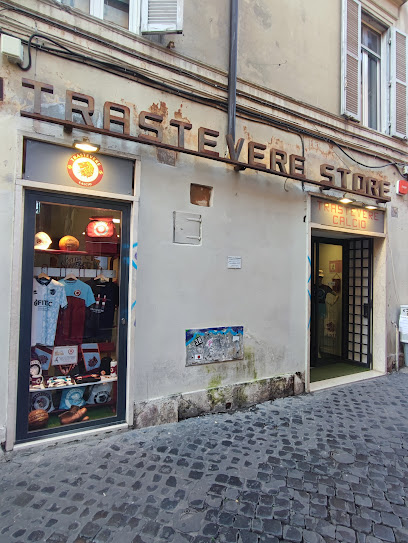
Carlo Cecchini Designer
0.5 km
Explore the exquisite handbags and shoes at Carlo Cecchini Designer, a fashion boutique that captures the essence of Italian craftsmanship in Rome.
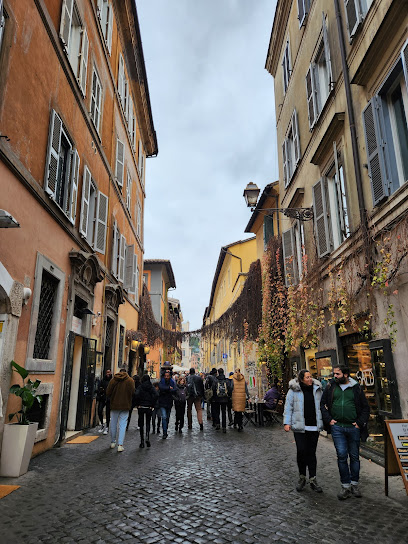
Sapataria
0.6 km
Explore Sapataria in Rome for unique, handcrafted gifts that reflect the rich culture and artistry of Italy.
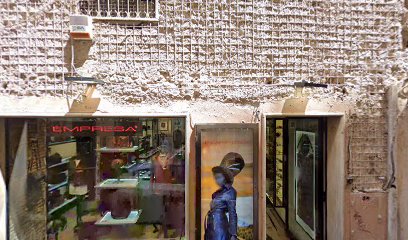
Beija Flor
0.6 km
Explore the elegance of Italian fashion at Beija Flor, a charming women's clothing boutique in Rome, where unique styles meet quality craftsmanship.

Ancient Pizzicheria Ruggeri
0.6 km
Explore the authentic flavors of Italy at Ancient Pizzicheria Ruggeri in Campo de' Fiori, a must-visit grocery store for tourists seeking gourmet delights.
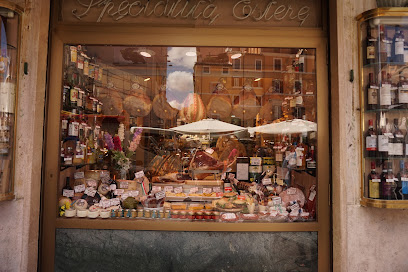
KLK Navona
0.6 km
Explore the heart of Rome at KLK Navona, where exceptional costume jewelry meets Italian craftsmanship and style.

supermarket piazza navona
0.6 km
Discover the flavors of Rome at Supermarket Piazza Navona, your local grocery store for fresh produce and Italian specialties in the heart of the city.
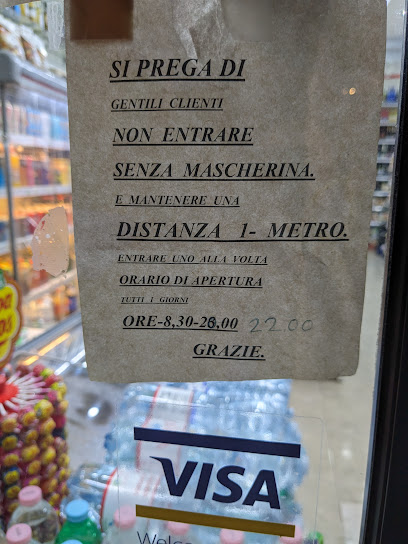
Norcineria Viola
0.6 km
Indulge in Rome's authentic flavors at Norcineria Viola, your go-to spot for artisanal cold cuts and Italian grocery delights.
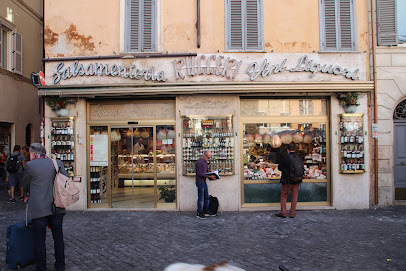
Flea
0.7 km
Discover a charming collectibles store in Rome, offering unique vintage treasures and antiques that reflect the city's rich history.
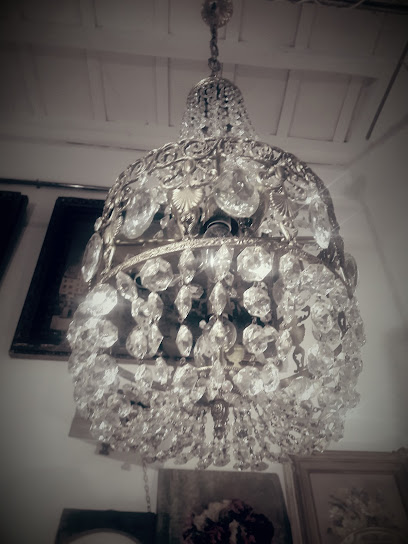
Mercado
0.7 km
Explore Mercado in Rome for a vibrant shopping experience filled with local flavors, artisanal goods, and the true essence of Italian culture.
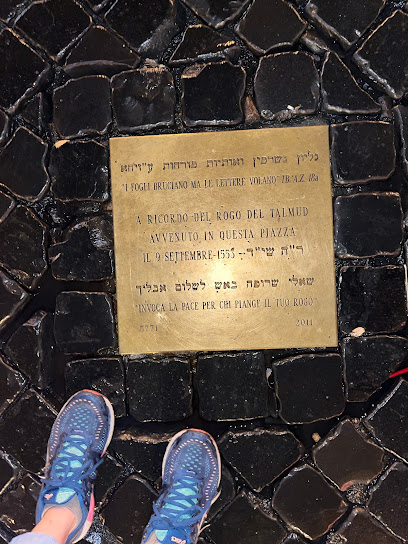
Groove Rome Berlin
0.7 km
Discover unique fashion at Groove Rome Berlin, a boutique in the heart of Rome offering exquisite dresses with a stylish flair.
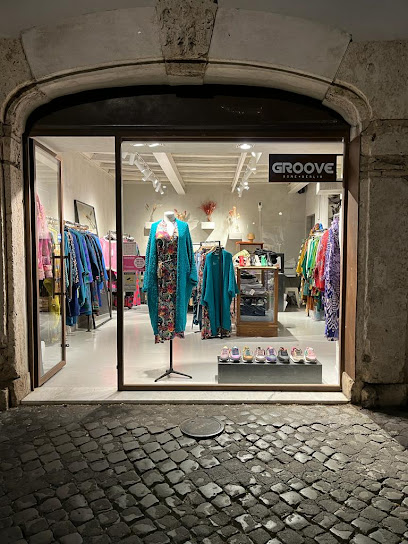
Murano Store
0.7 km
Explore the exquisite Murano glass treasures at Murano Store, a souvenir haven in Rome that captures the essence of Italian artistry.
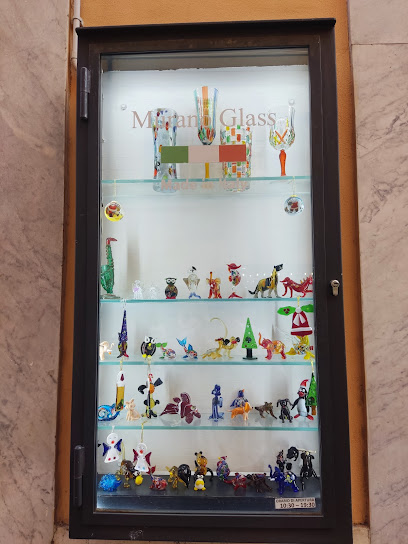
Essential bars & hidden hideouts
Otivm Roof Bar
0.3 km
Discover the enchanting Otivm Roof Bar, where exquisite cocktails meet breathtaking views in the heart of Rome's vibrant nightlife.
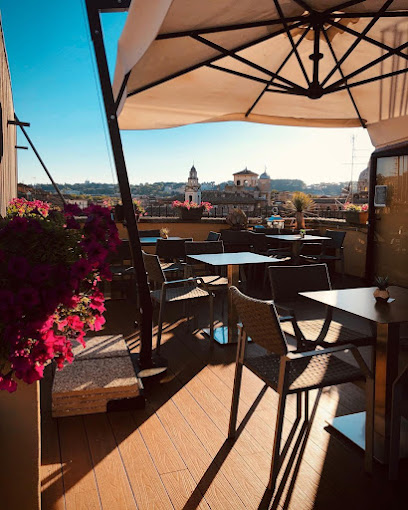
The Hole Trastevere
0.4 km
Discover the vibrant nightlife of Trastevere at The Hole, a cocktail bar blending creative drinks and local culture in the heart of Rome.
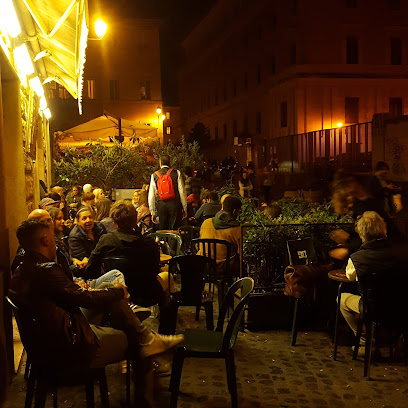
Santa Cocktail Club - Roma
0.5 km
Discover Santa Cocktail Club in Rome, where innovative cocktails and vibrant nightlife create unforgettable memories in the heart of the Eternal City.
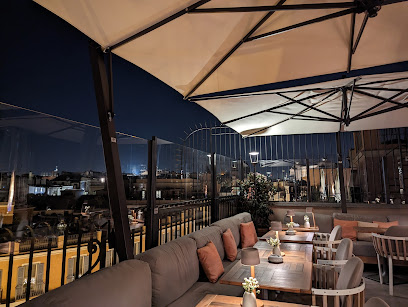
404 Name Not Found
0.5 km
Experience the vibrant cocktail culture at 404 Name Not Found Cocktail Bar, a stylish gem in the heart of Rome, perfect for unwinding and socializing.
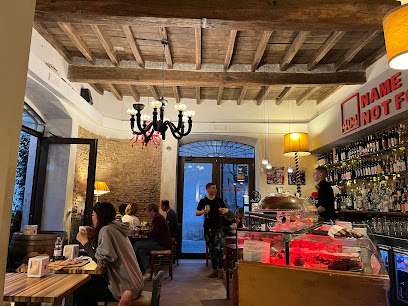
Bar de' Fiori
0.6 km
Experience the vibrant atmosphere and delicious offerings at Bar de' Fiori, a charming bar in the heart of Rome's Campo de' Fiori.
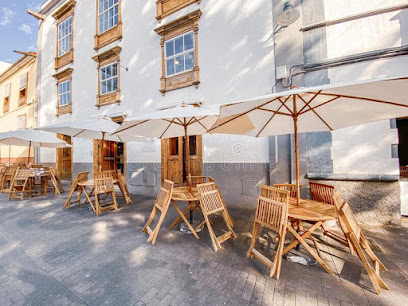
AMERIAN BAR
0.6 km
Discover AMERIAN BAR in Campo de' Fiori, where vibrant atmosphere meets exquisite drinks in the heart of Rome.
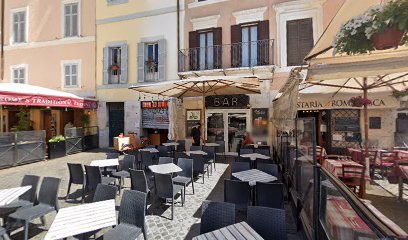
Eretico bistrot
0.7 km
Experience the vibrant nightlife of Rome at Eretico Bistrot, where creative cocktails and a lively atmosphere come together in the heart of Campo de' Fiori.
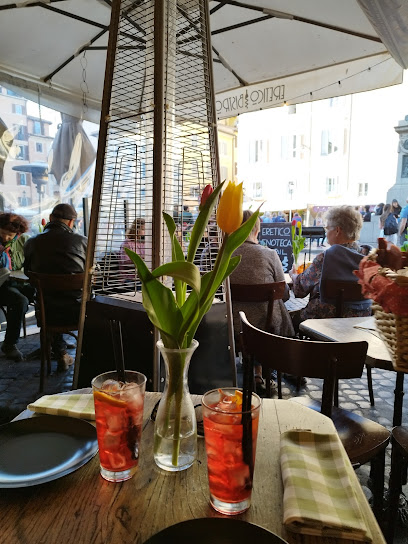
Roma Beer Company
0.7 km
Discover the vibrant atmosphere and unique flavors of Rome at Roma Beer Company, your go-to gastropub for craft beers and Roman cuisine.
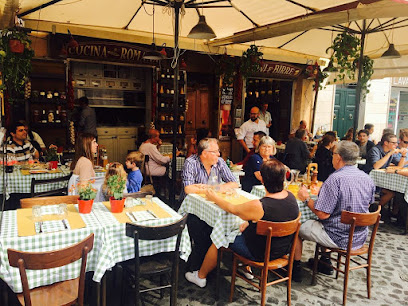
Taba Café Campo de' Fiori
0.7 km
Discover the culinary charm of Taba Café Campo de' Fiori, a bistro and cocktail bar nestled in Rome's vibrant market square.
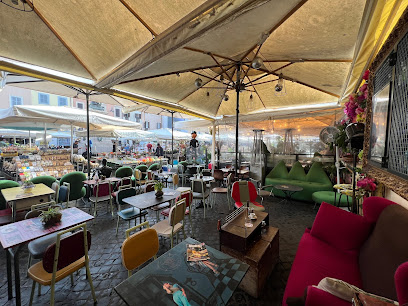
FRENI E FRIZIONI
0.7 km
Discover Freni e Frizioni, Rome's iconic cocktail bar known for its innovative drinks and vibrant atmosphere, perfect for a night out in the Eternal City.
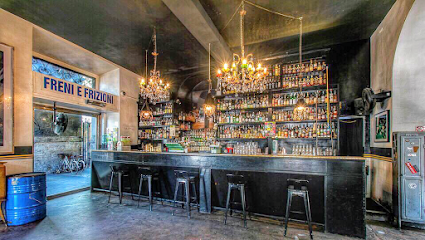
Bar Meccanismo
0.7 km
Discover Bar Meccanismo: where traditional Italian café culture meets the vibrant nightlife of Rome, in the heart of Trastevere.
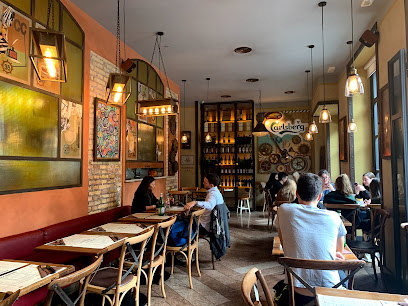
The Drunken Ship
0.7 km
Experience vibrant nightlife and delicious American cuisine at The Drunken Ship, Rome's must-visit pub in the heart of Campo de' Fiori.
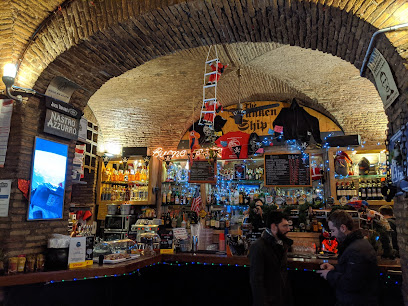
Giganti
0.7 km
Experience authentic Italian dining at Giganti Bistro, a beloved culinary spot in the lively Campo de' Fiori of Rome.
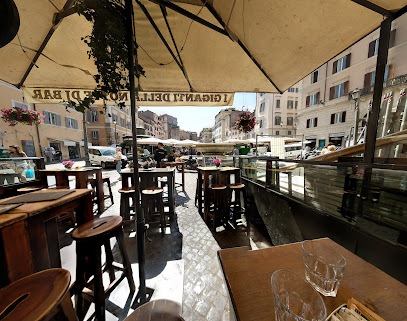
Ginger - Pantheon
0.7 km
Discover the vibrant flavors of Italy at Ginger - Pantheon, a health-focused bistro offering fresh dishes and a cozy atmosphere in the heart of Rome.
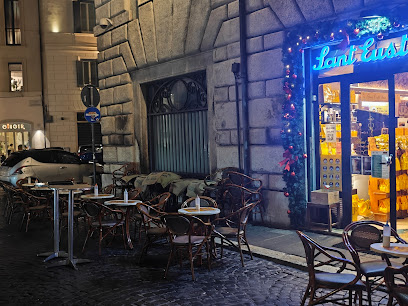
Big Hilda Public Bar
0.7 km
Discover the vibrant ambiance at Big Hilda Public Bar, a must-visit pub in Rome for an authentic local experience and delightful drinks.
